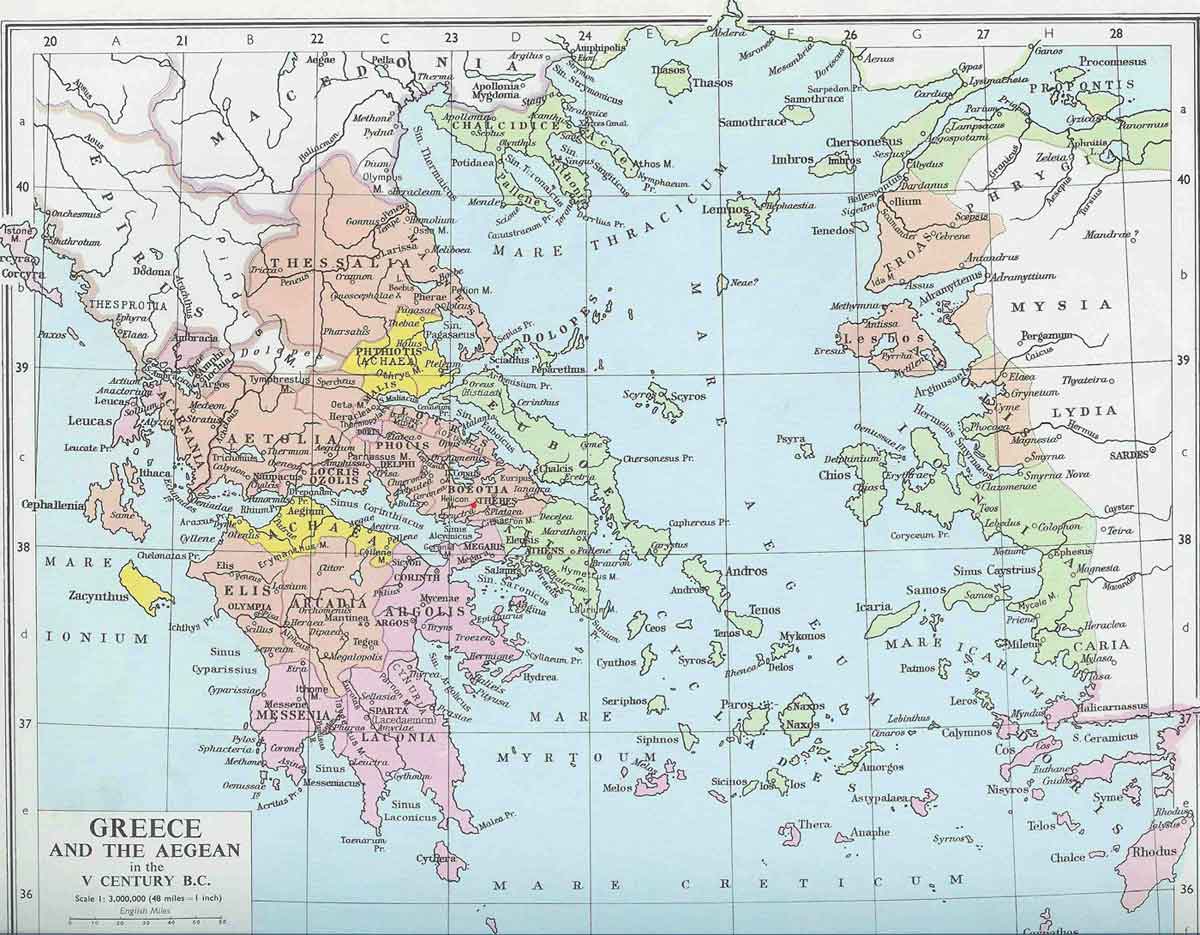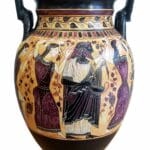The Battle of Leuctra, fought in 371 BC, wasn’t merely a clash of armies; it was a seismic shift in ancient Greek history, marking the end of Sparta’s centuries-long dominance. This article delves into the strategic brilliance of Theban general Epaminondas, his revolutionary tactics, and the far-reaching consequences of this pivotal battle.
Leuctra: How a Revolutionary Tactic Toppled a Hegemon
For over a century, Sparta reigned supreme in Greece, its military prowess seemingly unmatched. However, by 371 BC, simmering resentment among other city-states and several weakening wars, including the Peloponnesian and Corinthian Wars, had created an environment ripe for a challenge. This challenge came from Thebes, under the innovative leadership of Epaminondas.
The Rise of Thebes and Epaminondas’s Vision
Thebes, initially a secondary player, underwent a transformation under Epaminondas. He wasn’t just a military leader; he was a military innovator. Recognizing the limitations of Sparta’s rigid, traditional tactics, he envisioned a more flexible, adaptable Theban army. This vision would culminate in a revolutionary battle strategy.
The Clash at Leuctra: A Gamble That Paid Off
In July 371 BC, the Spartan army, led by King Cleombrotus I, and numbering likely around 10,000 hoplites and allies, clashed with the Theban army, under Epaminondas, which probably consisted of about 6,000 hoplites. While Spartan numbers were likely greater, the Thebans possessed a decisive advantage: a revolutionary new tactic. It’s important to note that the exact numbers of soldiers involved are still debated by historians today.
Epaminondas’s Oblique Order: A Tactical Masterclass
Epaminondas discarded traditional head-to-head deployments. Instead, he employed the “oblique order,” concentrating his strongest forces, including the famed Sacred Band, on one wing of his army. This created a powerful wedge that smashed into the Spartan right flank with devastating effect. This wasn’t just a shift in formation; it represented a fundamental change in military thinking, similar to using a battering ram to breach a wall instead of attempting to demolish the entire structure at once. The impact was immediate and catastrophic.
The Aftermath: A World Reshaped
The Spartan army, its right flank shattered, was routed. King Cleombrotus was killed, and the myth of Spartan invincibility lay in ruins. The Battle of Leuctra was more than a military defeat; it was the shattering of Sparta’s centuries-long hegemony. Thebes briefly ascended to become the dominant power in Greece.
The Ripple Effect: Beyond the Battlefield
Leuctra’s impact extended far beyond the immediate aftermath. Epaminondas’s oblique order became a textbook example of military strategy, studied and emulated for centuries. The victory emboldened other Greek city-states to challenge Spartan rule, significantly weakening their once-unyielding power. The battle highlighted the power of superior tactics and leadership over mere numerical strength.
Comparing the Armies: A Study in Contrasts
The differences between the Spartan and Theban armies were stark:
| Feature | Spartan Army | Theban Army |
|---|---|---|
| Tactics | Rigid, inflexible formations | Flexible, innovative oblique order |
| Hoplites | Larger numbers, perhaps less maneuverability | Smaller, highly trained and highly mobile |
| Leadership | Cleombrotus I (possibly less adaptable) | Epaminondas (brilliant strategist and tactician) |
| Overall | Superior manpower initially; inferior tactics | Smaller; superior strategy and effective leadership |
The Enduring Legacy of Leuctra: A Lesson in Innovation
The Battle of Leuctra remains a compelling case study in military strategy, leadership, and the transformative power of innovation. While ongoing research continues to refine our understanding of the battle’s specifics, its impact on the course of history is undeniable. Epaminondas’ bold tactics, a testament to the power of strategic thinking and bold action, serve as a potent symbol of how innovative strategies can overcome seemingly insurmountable odds. The battle serves as a powerful reminder that history is often shaped not just by brute force, but by strategic brilliance.
Why Did the Spartans Lose at Leuctra? A Deeper Dive into Defeat
The Spartan defeat at Leuctra wasn’t solely due to poor luck; it stemmed from a confluence of factors.
The Spartan System: Strength and Its Limitations
The Spartan military machine, honed through the rigorous agoge training system, was renowned for its disciplined hoplite phalanx. This formation formed a virtually impenetrable wall in direct confrontation. However, this very strength became its undoing. The system’s rigid adherence to traditional tactics, a lack of adaptable cavalry, and a likely overconfidence in its own invincibility rendered it vulnerable to the innovative strategies of Epaminondas.
Epaminondas’ Strategic Brilliance: Outsmarting the Hegemon
Epaminondas recognized the flaws in the Spartan system. He understood that a direct confrontation would be strategically unwise. His genius lay in developing a tactical plan designed to exploit those very weaknesses. He wasn’t merely aiming to defeat the Spartans; he was aiming to revolutionize warfare itself.
The Echelon Formation: A Tactical Masterstroke
Epaminondas’s oblique order—also known as the echelon formation—was a radical departure from conventional military thinking. By concentrating superior Theban forces, including the elite Sacred Band, on one wing, he created a devastating wedge that targeted a specific weakness in the Spartan line. The impact was as if a battering ram, specifically aimed at the right flank, completely breached the Spartan defense.
The Sacred Band: Courage and Tactical Prowess
The Sacred Band, an elite Theban unit composed of pairs of male lovers, played a pivotal role in the battle’s outcome. Their unmatched courage and fighting prowess proved instrumental in breaking the Spartan line, allowing the Thebans to exploit the resulting chaos. Their contribution was essential to the overall success of Epaminondas’s strategy.
The Aftermath: A Crumbling Hegemony
The Battle of Leuctra resulted in a decisive Theban victory. The Spartan army was routed, their king slain, and the myth of their invincibility shattered. This victory represented a monumental shift in the political landscape of Greece and marked the end of Spartan dominance.
A Comparison of Forces: A Tale of Two Armies
A comparison of the Spartan and Theban forces highlights the critical differences:
| Army | Strengths | Weaknesses |
|---|---|---|
| Spartan | Highly disciplined hoplites, strong phalanx | Rigid and inflexible tactics, lack of cavalry |
| Theban | Innovative tactics, effective use of cavalry | Potentially smaller initial army; reliance on new strategy |
The Lessons of Leuctra: Adaptability and Innovation
The Battle of Leuctra offers enduring lessons in military strategy and leadership: rigidity can be deadly; strategic genius often trumps brute force; and elite units can be decisive. The battle remains a potent symbol of change and the importance of adaptability in the face of shifting power dynamics. While much is known, ongoing research continues to refine our understanding of this pivotal battle.
How Many Spartans Died at Leuctra? Uncertainties and Interpretations
Determining the precise number of Spartan casualties at Leuctra remains a challenge for historians, largely due to the limitations and potential biases inherent in ancient sources.
The Scars of Battle: Estimating Losses
While definitive numbers remain elusive, most scholars agree that the Spartan army likely suffered around 1,000 deaths, a significant loss compared to the overall size of their army, including the death of King Cleombrotus I. This figure is an approximation which is subject to ongoing scholarly debate.
The Importance of Context: More Than Numbers
What this loss signified, however, extended far beyond simple numerical casualties. The death of King Cleombrotus was a profound symbolic blow to Spartan morale and prestige. This loss symbolized the collapse of a belief system that had defined Spartan identity for centuries.
The Continuing Debate: Research and Interpretation
The exact number of casualties remains an active area of historical debate. New research, fresh interpretations of existing texts, and future discoveries may yet shed new light on the true figures. The uncertainty about precise casualty counts in no way diminishes the significance of the battle’s outcome – a profound and lasting shift in power.
The Impact of Leuctra: A Broader Perspective
The Battle of Leuctra’s significance extends far beyond the immediate loss of life. The battle’s influence extended into the military strategies and political situations of the ancient world.
| Aspect | Impact |
|---|---|
| Military Strategy | Epaminondas’s oblique formation revolutionized military tactics. |
| Political Power | The Spartan hegemony ended; Thebes rose to prominence, though for a short time. |
| Spartan Prestige | The myth of Spartan invincibility was shattered. |
| Casualty Estimates | Estimates of Spartan deaths vary, but around 1,000 is commonly cited, although likely an approximation. |
| Lasting Legacy | The battle’s strategic implications continue to be studied by military historians. |
The story of Leuctra highlights the limitations of relying solely on conventional strength and the transformative power of strategic innovation. Future research might further refine our understanding, but the lasting impact of this historic battle remains undeniably significant.
Who Won the Battle of Leuctra? A Decisive Shift in Power
The Battle of Leuctra, fought in 371 BC, resulted in a decisive victory for the Theban-led Boeotian League over the Spartan army. It marked the end of Spartan hegemony and ushered in a new era in ancient Greek history.
A Clash of Titans: Sparta and Thebes
Sparta, dominant for generations, faced a rising Thebes under the brilliant military leadership of Epaminondas. Unlike the Spartans, who clung to traditional, inflexible tactics, Thebes displayed adaptability and innovative military thinking. This difference proved crucial.
Epaminondas’ Strategic Masterclass: The Oblique Order
Epaminondas’s masterstroke was his use of the oblique order, a revolutionary tactical maneuver. This formation, concentrating superior forces on one wing, exploited the Spartan army’s predictable, rigid tactics, leading to a devastating breach in their defenses. This outmaneuvering directly counteracted the Spartan phalanx, highlighting the power of adaptability in military strategy.
The Battle: A Turning Point
The battle was swift and decisive. The Spartan right wing, commanded by King Cleombrotus I, was overwhelmed. Cleombrotus’ death further demoralized the Spartan forces, triggering a complete rout. The carefully orchestrated Spartan phalanx was no match for the Thebans’ adaptability.
Thebes’ Ascendance: A Momentary Hegemony
The Theban victory fundamentally reshaped the Greek political landscape. The loss at Leuctra ended Sparta’s dominance. While Thebes’ reign at the top wasn’t long-lasting, the battle fundamentally altered the power dynamics among Greek city-states.
A Comparative Look: Sparta vs. Thebes
| Army | Strengths | Weaknesses |
|---|---|---|
| Spartan | Disciplined hoplites, strong phalanx formation | Rigid tactics, lack of adaptability, overconfidence |
| Theban | Innovative tactics, effective use of the oblique order | Potentially smaller initial force |
The Enduring Legacy: Innovation and Adaptability
The Battle of Leuctra is more than just a historical event; it’s a powerful illustration of how strategic innovation and adaptability can overcome seemingly insurmountable odds. Epaminondas’ tactical genius continues to be studied by military strategists, demonstrating that superior strategy can triumph over superior numbers, particularly when the superior numbers are inflexible. The legacy of Leuctra serves as a reminder that even seemingly invincible powers are vulnerable to innovative approaches and strategic thinking.
- Don Quixote Fighting Windmills: A Deeper Look at the Iconic Scene and its Enduring Legacy - November 28, 2024
- Deadly Strike of the Hydra: WoW SoD Blackfathom Deeps Guide & DPS Optimization - November 28, 2024
- Dionysus Feast Painting: From Paris Olympics Controversy to Ancient Bacchanalia - November 28, 2024















